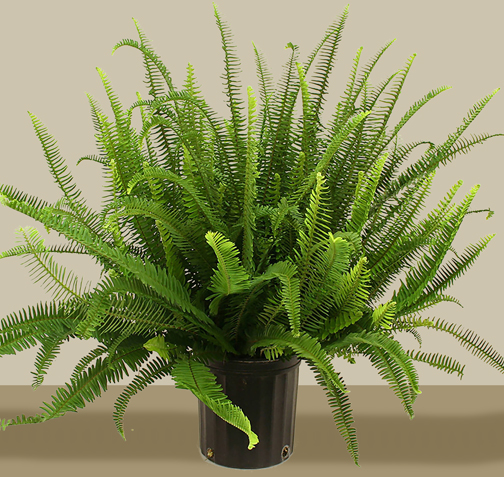Ferns vary in their growing condition needs. Several commonly grown indoor ferns have a well-earned reputation for being finicky growers, but others are surprisingly easy. Ferns with tough, leathery foliage usually adapt better to typical household conditions than feathery, delicate types. The more delicate types of ferns will grow best where they can be given special care. A terrarium or a very humid area such as a bathroom will suit them well.
Most ferns prefer moderate, indirect light inside. Close to a north-facing window is ideal. Never put ferns directly in a south or west-facing window. Direct sunlight will damage the foliage.
All ferns are moisture lovers, but the amount that they need varies among the many different types of ferns. Some ferns like to be kept almost wet while others should dry slightly between waterings. Be sure not to allow any of them to dry out completely. Do not allow water to stand in pots since this can lead to root damage. Potting soil for ferns should be porous and allow excess water to drain quickly.
Most ferns should be fertilized lightly once a month from April through September. Liquid houseplant fertilizers should be applied at about one-half the recommended rate.
In the home, plant diseases are very rarely a problem. Too much or too little water plus insects and mites are the main problems. Root rot usually results from a soil mix that does not drain quickly or overly frequent watering. The most common insect problems are scale insects and mites. Pesticide sprays injure many ferns. Read the label of any control product carefully, test the spray on a small area or number of plants first, and observe for injury. Insects can often be removed by hand picking or by a brisk water spray outside.



